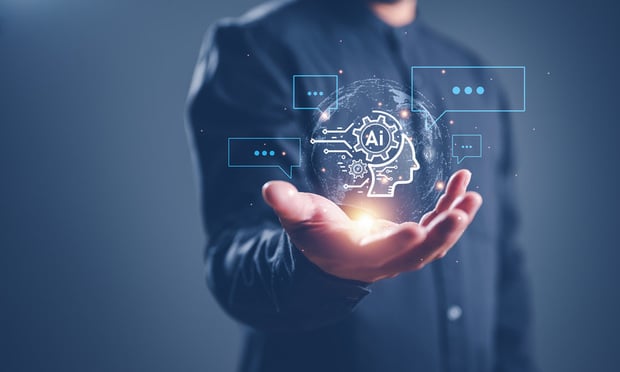 Credit: SomYuZu/Adobe Stock;
Credit: SomYuZu/Adobe Stock;
Artificial Intelligence (AI) is playing a major role in our lives, but how fast will it impact the way we hire and work? It could be significant. McKinsey Global Institute recently reported that by 2030, activities that account for 30% of U.S. working hours could be automated.
AI's impact has been slower in the benefits industry as human resource (HR) leaders are largely dependent on outdated solutions that require a significant amount of manual work and deliver a poor user experience. As a result, employees aren't fully leveraging optional benefits like consumer-directed benefit accounts, which offer enormous financial value to the employee, yet typically see only about a third of eligible employees enrolling.
Recommended For You
But the benefits industry is finally changing. HR leaders are demanding technology innovations to keep pace with heightened consumer expectations, and new providers are meeting that demand with modern solutions. According to Gartner, 76% of HR leaders believe that their company will fall behind others if they do not implement AI-powered HR solutions within the next 12 to 24 months. A recent Elevate study in partnership with Datos Insights on AI and modernization trends within benefits account administration points to the fact that 89% of benefit decision makers are looking to replace older solutions with technology-centric vendors.
As you consider implementing AI-enabled benefits administration solutions, here are three top strategies to ensure success:
Tip 1: Leverage AI to address business pain-points
AI can be an incredible tool to streamline manual tasks and drive efficiency, but attitudes around AI can be mixed. Some team members may be excited to embrace new technology, while others are hesitant as they worry if AI will "take" their job.
The truth is, AI should be leveraged to directly address a company's pain points and inefficiencies in benefit enrollment and administration. AI can help cut down on redundant manual work and reduce the amount of employee questions that HR teams have to field, which frees up time to work on strategic projects or approach other tasks with more care or compassion. With the help of AI, the human aspect of HR can move to the forefront. In fact, recent data from TalentLMS research shows that 57% of HR managers anticipate a rise in the importance of soft skills as AI adoption spreads.
For employees, AI solutions can provide personalized feedback on-the-spot, make instant determinations on claims and process reimbursements in real-time—no more waiting for an email or mailed response. These solutions can minimize employee frustration and enable them to truly see the advantages their benefit programs provide.
By quantifying the impact across the board, HR leaders can build a solid business case for use of AI solutions, from increases in productivity to improved employee satisfaction and greater benefits engagement.
Tip 2: Work with a partner that gets it
Many benefit platforms were built 20 years ago, before words like API, mobile and cloud were part of our everyday vernacular. Times are changing quickly and many legacy systems simply cannot keep up. Although the world of AI may still feel like the Wild West, there are many technology companies with expertise that can serve as consultants along the AI journey.
Don't be afraid to ask the hard questions about how it works and the types of support you can expect. HR leaders should probe potential partners on how their solutions meet HIPAA requirements, dig deeply into their security policies, and discuss data storage and access.
In addition to security practices, examine exactly how these solutions will impact your team on a day-to-day basis, in terms of data transfers, reporting capabilities, and ongoing support for your team and your employees.
Tip 3: Get your data right
AI is great for quickly and efficiently identifying anomalies within data and pinpointing patterns and trends. For example, an AI solution can comb through employee data and notify benefit teams about key enrollment milestones, identify any errors, and trigger automated processes. AI can also automatically notify employees that it's time to enroll in their benefits, help them evaluate their plan choices, alert them when they need to submit more information, and more.
But, before AI can comb through employee data, HR teams need to ensure the data they're inputting into the system is cohesive and not riddled with errors or conflicting data points. Disparate sources of data can be an issue for any company or department. AI-powered benefits can address these problems, providing a clean, single source of data.
Changing the industry as we know it
By embracing AI, the benefits industry can expect huge changes in productivity, the accuracy of the work being produced, and the way the work gets done. AI can cut down on the manual work that's creating those loose connections and completely realign the work that the people are doing. And when it's trained with good data, AI can make very quick and accurate use of that data to benefit both HR teams and employees.
AI will never be a replacement for human expertise. Instead, it will help increase efficiency, improve the user experience, and create a beneficial collaboration between automation and analysis. In the benefits space, AI is the ultimate answer to doing more with less, and putting the "human" touch back into HR.
Brian Cosgray, CEO and Co-Founder, Elevate
© Touchpoint Markets, All Rights Reserved. Request academic re-use from www.copyright.com. All other uses, submit a request to [email protected]. For more inforrmation visit Asset & Logo Licensing.






